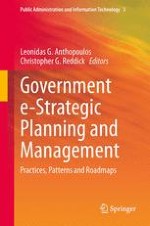2014 | OriginalPaper | Chapter
10. Consulting the British Public in the Digital Age: Emerging Synergies and Tensions in the Government 2.0 Landscape
Author : Shefali Virkar
Published in: Government e-Strategic Planning and Management
Publisher: Springer New York
Activate our intelligent search to find suitable subject content or patents.
Select sections of text to find matching patents with Artificial Intelligence. powered by
Select sections of text to find additional relevant content using AI-assisted search. powered by
